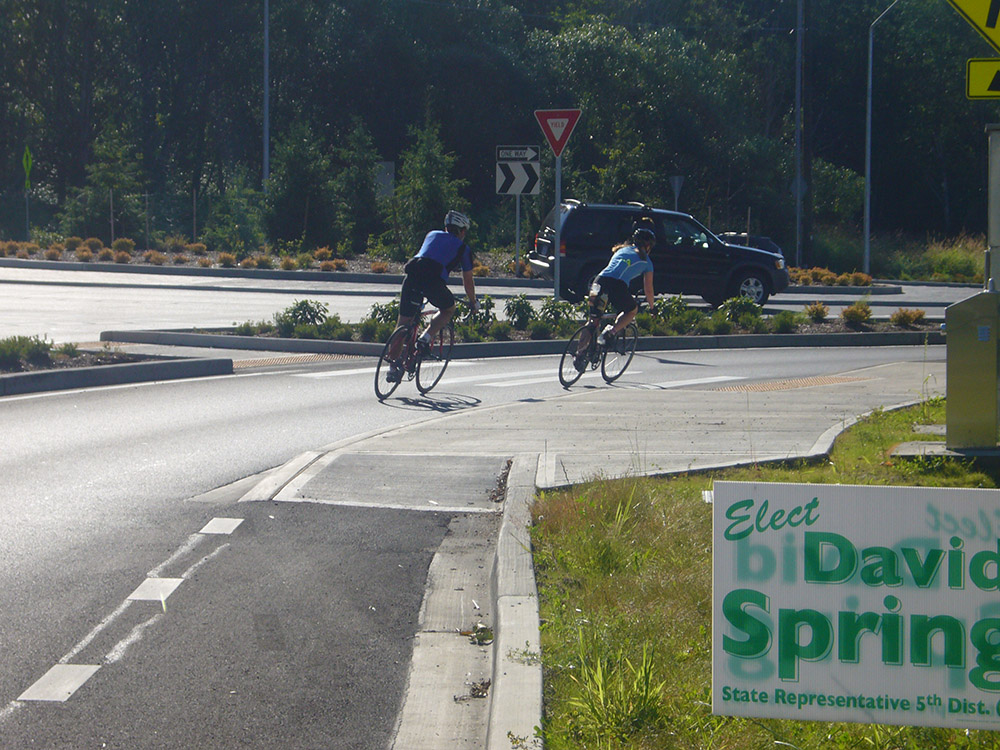May is National Bike Month. It is a great time to get out and ride, either for leisure or as part of our commutes. Biking is a fun way to explore our communities and keep our bodies healthy. Cycling is significantly less expensive than driving and is more environmentally friendly too. In order to bike safely, you need only a few basic things: a reliable bike, a good helmet, and a safe space to ride, which is where transportation engineers enter the picture.
Many communities have adopted a Complete Streets design philosophy to provide safe mobility for all members in our communities, including cyclists, pedestrians, passenger cars, transit, and heavy vehicles. Transportation engineers design cycling facilities in a number of ways depending on the conditions of a particular location. Along corridors, dedicated bike lanes are often employed, other times “sharrows,” indicating bicycles and vehicles will share a lane, are selected. Sometimes bikes and pedestrians will be separated from traffic on a multi-use path, which can be adjacent to the roadway or separated by a landscape buffer; this is a nice option when there are a lot of slower moving, recreational cyclists in an area.
Intersections can be more challenging for cyclists. At stop or signal controlled intersections, cyclists must be aware of multiple vehicles making turn and through movements, and they must feel confident that the drivers see them to feel safe traversing the intersection. Roundabouts are much more bicycle-friendly and provide considerably increased safety for cyclists over other forms of intersection control. They reduce the number of potential conflict points (by eliminating the possibility of T-bone or head-on collisions), lower the vehicle/bicycle speed differential (the roundabout’s geometry forces vehicles down to bicycle-speeds), and provide cyclists an opportunity to exit the road via bike ramp and use a multi-use path or allow them to claim the lane and navigate the intersection as a vehicle would (which is easy since vehicles have already been slowed to bicycle-speeds). It is not unusual for an intersection to be reconstructed as a roundabout as a means of addressing pedestrian and bicycle safety concerns.
Your cities, counties, and state (and the consultants who support them) are working hard to improve your cycling options, so get out your bike, strap on your helmet, and go explore those communities. Happy riding!

